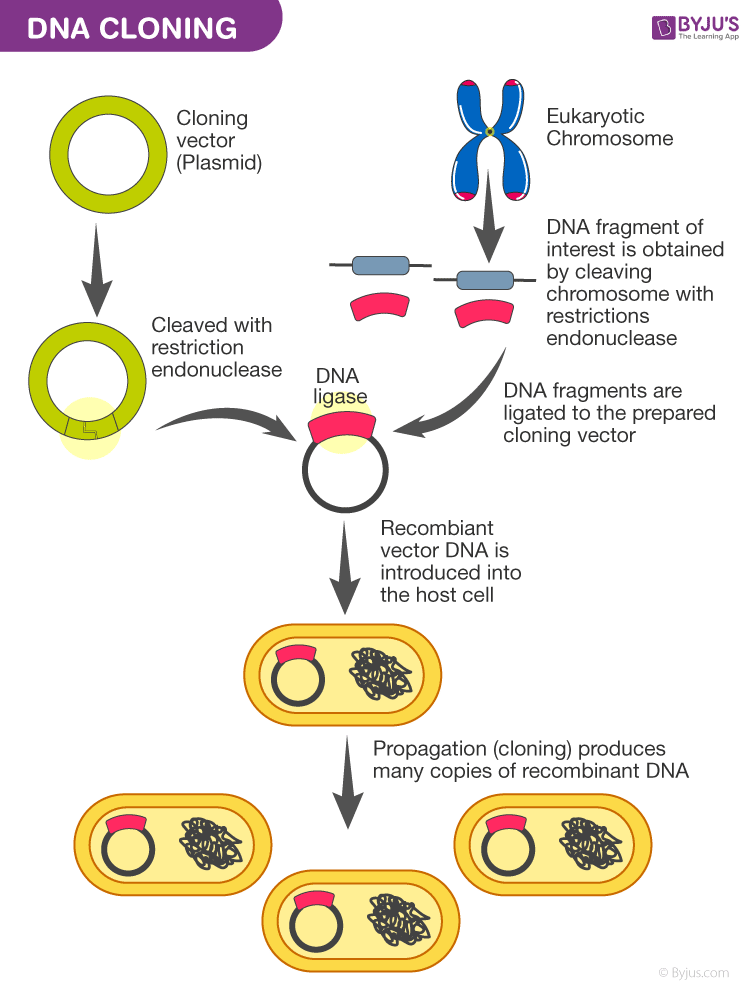Recombination and transformation are two steps of DNA cloning. The cells which are introduced with the desired gene in their genomes, such as bacteriophages and bacterial plasmids, are known as the recombinants. The cells which are introduced with the recombinant DNA are known as the transformants.
Let us study transformants and recombinants, before differentiating between them.
What are Transformants?
Transformants are cells that contain foreign genetic material. Bacterial cells are transformed to produce multiple copies of the desired gene as they are easy to handle in the laboratory. The most common bacterial cell used for transformation is E. coli.
Transformation is the process of inducing the cells to take up the recombinant DNA. The cells that take up the DNA are called transformants, and the ones that do not take the recombinant DNA are called non-transformants.
The transformed cells are differentiated from the non-transformed cells by selectable markers. The plasmids or vectors that are introduced into the host cell are inserted with a selectable marker such as antibiotic resistance markers to make the detection easy. When the transformed and non-transformed cells are grown on an antibiotic-containing medium, only transformed cells are able to grow.

What are Recombinants?
Recombinants are cells that are composed of a recombined genome containing foreign DNA. They are constructed artificially by inserting the gene of interest into the bacteriophage’s genome or plasmids of bacterial cells. These cells then act as a vehicle for the transfer of foreign DNA to the host cell.
The foreign DNA introduced into the cells might incorporate into the genome or remain separate. Either way, they are able to transform cells.
The construction of recombinants requires enzymes such as restriction enzymes and DNA ligases. The gene of interest and the vector are cleaved with the same restriction enzymes and rejoined with DNA ligase. The vector with the foreign insert is known as recombinant or recombinant DNA.
Transformants vs Recombinants
| Transformants | Recombinants |
|---|---|
| Description | |
| Transformants are cells that are introduced with the recombinant DNA molecule. | Recombinants are carrier molecules that have foreign DNA inserted into their genome. |
| Expression | |
| They are cells that are able to express recombinant DNA. | They are able to self replicate within the host organism. |
| Properties | |
| The cells which grow easily and multiply at fast rates are selected for transformation. | The cells that contain selectable markers and are easy to extract are chosen for recombination. |
Visit BYJU’S Biology to learn more.
Also Check:
- Bacterial Genetics – Conjugation, Transduction, Transformation
- Griffith Experiment and Search of Genetic Material
- What Are the Types of Recombination?
Frequently Asked Questions on Difference between Transformants and Recombinants
What is the difference between transformants and non-transformants?
The cells that have taken up foreign DNA are called transformants, and the cells that do not take up foreign DNA are called non-transformants.
What are recombinants and non-recombinants?
The cells that have foreign DNA inserts in their genome are called recombinants, and the parental genome that does not contain any DNA inserts are called non-recombinants.
Comments